Multiracial Motherhood: Our Multiracial Family Through Adoption

What We Can Learn From One Mother's Story
Happy Friday! I thought we could kick off the weekend by starting up one of my favorite series again!Family Fridays!This series is so special to my heart because it's a chance for mothers to come together and share their experiences with their own multiracial family. The beautiful thing is that all of our families are unique. They all have their own special qualities, unique challenges, and different experiences.Today, my lovely and gorgeous friend Sara is sharing about her mixed race family. They have taught my family and I so much about diligence because Sara goes out of her way to make sure their lives reflect a true multiracial community. Check out more about her story below!
Let's Meet Sara
Hello, everyone! I'm Sara and I am excited to be here at The Almost Indian Wife to share a little bit about my family with you! Our situation is a bit different than the ones you may be used to reading about here, in that our family's multiracial "status" did not come about because of my husband or myself, but because of our children. And before I dive in, can I confess something? I don't always feel like we really are multicultural. Do we want to be? Yes! Are we working toward it? Yes! Do we still have lots more to learn? GOOD GRIEF, YES. And that's why I think connecting with other multi-cultural families is such a cool thing! Okay, back to the introductions...My husband, Phil, and I have been married for almost nine years now and we have two children. We lived in Ohio up until the spring of 2016 when we moved to Illinois. Phil and I were foster parents for four years in Ohio, during which we met and then adopted both our daughter and son. Russell (5 years) is African American and Claire (4.5 years) is Caucasian. Our children are not related biologically (yes, some people ask!) and have very different birth stories and foster care experiences. 
One thing my children do have in common though, (among plenty of other things, trust me) is that they have two parents who acknowledge and celebrate the things that make each of them unique.
Speaking of unique, let's talk culture. What exactly is culture anyway? Here's one definition: "The customary beliefs, social forms, material traits of a racial, religious, or social group;" also, "the characteristic features of every day existence shared by people in a place or time." Reading those definitions reinforces a couple things to me. One: The racial majority in our family is white American. That seemed so silly to even type but there it is. And let's be real, white American culture is not one we have to make an effort to call attention to. Ya know?
Two: If we want to be truly multi-cultural -- embracing, celebrating and participating in our son's racial culture -- we have to be intentional.
Neither my husband nor I are African American. And although our son is, he's been with us since he was two months old. Our white American culture is pretty much all he knows. So we have some work to do! What does this intentionality look like for us? Well, for starters, whenever I have the choice I choose African American. That might sound funny or off-putting but hear me out. It's not that we don't welcome and seek out other cultures. We absolutely do! But I'm here today talking specifically about my African American son and HIS culture and our desire for him to have racial mirrors in his life. If we want to raise a young man who embraces and is secure in his African American identity, he specifically needs African American people in his life. Okay, here's what I mean...Our community here in Illinois has a kids' sports program. So does the neighboring community. We're choosing to drive just a couple extra minutes to the neighboring community because it's more diverse. We figured there's a greater chance there for our son to have teammates and opponents and coaches who look like him than if he were playing on a sports team here. (Why didn't we choose to live there instead when we moved from Ohio, you ask? We wonder the same thing some times. Anyway...)When looking for a church to join, diversity was a priority for us. After Biblical teaching and gospel-centeredness, we looked for a place where our son could walk in and see people who looked like him. And not just in the pews, but on the stage speaking. In the classrooms teaching. In the small groups leading. When selecting books and toys for my kids, it's not difficult to find white baby dolls and white story characters and white action figures. In fact, if you're not purposely trying to avoid a whitewashed book and toy collection, you'll most likely end up with one. So when strolling through the store we see a giant Finn action figure (Star Wars main character who is African American- woo hoo!!), I snatch it up. A black baby doll for Claire? Yes, please. A picture book with black main characters instead of white ones? You get the idea. Now you might find this one silly, but I'm okay with that. When checking out at a store and I have the option (if it's not an insanely packed lane versus a totally empty one) I will choose a lane with a non-white cashier. 
We take our son to a black barber.
(A no-brainer.) This choice doesn't mean just one more racial mirror for my son. Every barber and almost every client there is African American. So, it means many. It means my son gets to be the majority. And my daughter and husband and I experience what it's like to be the minority. It means sitting and talking with people who share my son's culture. People who will tease me for never having seen "The Jeffersons" and who graciously and honestly answer my hair care questions. I'm telling you, walking into that shop where we are greeted by a packed room of 100% brown and black faces makes my heart swell with joy. Because the more we can immerse ourselves in African American culture, the more our family moves toward being truly multi-cultural. One more piece of advice. More important than all the little examples I shared above!
When seeking to embrace a culture that is not your own you have to first humbly acknowledge that you are not an expert.
And then start sharing your life with those who are! Become friends with people who are a part of your loved one's culture. Spend time with those who can help you understand the things you don't and who will lovingly correct you when you need it. I mean, read all the history you want; build the most diverse picture book library on planet earth; learn all the cultural traditions you can...but without real relationships with real people who know this culture, you will be missing out. And there you have it. We are a multi-racial family doing our best to recognize, embrace and encourage the unique identities of the precious children we've been entrusted with. We definitely don't have it all figured out but we're taking it one day at a time and learning as we go!
Follow Sara along on her journey and head over to her Instagram!
What Your Biracial Child Brings To School For Lunch Reveals More Than You Think
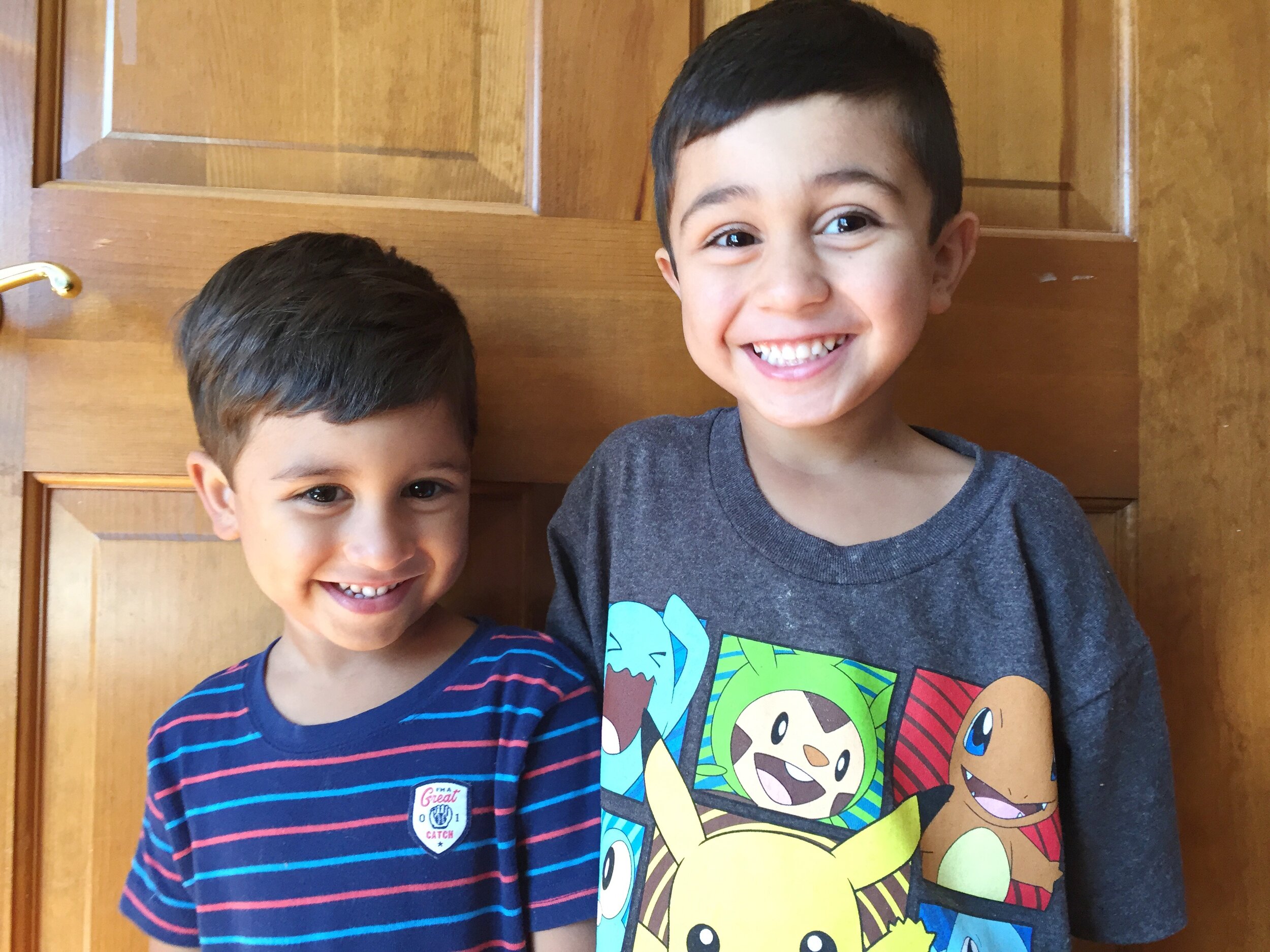
What Your Biracial Child Brings To School For Lunch Reveals More Than You Think
Over the last few years, my oldest son Liam has developed a huge love for leftovers. I don't know what it is, but every day around lunch time he asks what left overs we have. If by some chance we're out, he begs me to make leftovers...He doesn't just want a quick sandwich, he wants good food. He wants me to list out all the leftover options and gets excited to choose. I guess it's kind of like an international buffet at our house. We usually have pasta or Indian food like chicken curry. He's so obsessed with left overs that he started asking if he could bring left overs to school while we were visiting his cousins.Mom, will you send me left overs when I go to first grade next year?Now, his cousins are half Indian just like my kids are. They understand the multiracial dynamic because they're living it too! They're currently in elementary school and have plenty of thoughts on bringing left overs to school!
Their cousins are very comfortable in their biracial identity.
They've been to India, understand some Telugu, wear Indian clothes to events, and so on. They're also blessed with a momma that makes Indian food constantly and a daddy who makes comfort American food.I guess I assumed they'd want to bring their favorite dishes to school with them, but when I started asking them their answers surprised me.One of them told me they bring Indian food to school every single day. I wasn't surprised about this one because I've seen her devour a plate of tandoori chicken and I know how much she likes it.However, the other two said they won't bring Indian food to school and went on to tell me what their classmates have said about it in the past. Indian food has a distinct smell and their friends made fun of it. They hysterically laughed asking how they could eat that stuff.They only endured their friends bullying one time and decided then and there that they wouldn't bring Indian food to school anymore. Now, these kids love Indian food, but it wasn't worth being made fun of.
You guys, kids can be mean.
It broke my heart that they don't bring Indian food to school because of what people may say.I looked to their sibling and asked why she doesn't let her friend's bullying stop her from bringing Indian food to school. Her response was beautiful.I don't care what they say. At least I eat my favorite food every day.Boom! She hardly flinched when she said that and it's stuck with me since. I want my boys to have the same approach.As biracial kids, it's hard to be set apart. While most kids bring a PBJ to school, some kids bring traditional Indian left overs. There's nothing wrong with that! They bring what they would normally eat at home and it should be enough.It breaks my heart that kids bully each other over things they just don't understand. They look at an international dish and assume it's gross because they're not used to it.I hope and pray my kids won't let their friends determine what they bring to school for lunch.
I hope their pride and confidence in who they are helps them shrug off friend's comments.
This is why it's so important to me to have people over for Indian food and to eat with our hands. It shows our kids we won't grab a utensil just because our own friends may say something. Traditionally, you eat Indian food with your right hand in India and we do the same thing in out family.We also offer our kids and their friend's Indian treats during the day. Then we're right there if their friends say something and can gently encourage our kids to explain what it is and offer their friends some.Growing up a biracial child can bring about some unique challenges, but as a parent, I hope I can help them to build a strong identity that isn't rocked by what other people ignorantly say.
Have your kids every experienced this? If so what did you do?
If you like this, then check out this post!

Celebrating Holi By Making It Colorful

This post is brought to you by Tea India. As always all opinions are my own.
How You Can Celebrate Holi
As spring is approaching, many Indian families around the world are getting excited. It means it's almost time for Holi, the Festival of Colors! This holiday has been making its way to the US as some colleges are even starting to celebrate it on their own!It's an opportunity for people to put down their differences and have some fun! During Holi week kids play pranks, colorful powder is thrown (or a color war if you're in our house!), and people are celebrating good over evil.As multicultural families, this holiday may look different to all of us. You may not know about the religious background to the holiday and that's ok. This is a great opportunity to teach your family about the world around them.As parents, we're raising global citizens. We have the opportunity to challenge hate and racism in the world by informing our kids. We can teach our kids about different holidays, customs, and ways of life. Holi is the perfect holiday to teach your kids about!It's all about love and celebration.

Colorful Activities
Another name for Holi is the Festival of Colors so as you can imagine, it's all about color! The time of year it's celebrated alone is all about flowers blooming and life starting fresh.There are so many ways you can teach your family about the Festival of Colors. Here are a few activities my kids love doing around this time of year.

Good Food
One of my family's traditions during Holi week is to prepare a delicious batch of Indian donuts. They're super fun and easy to make with the whole family! I swear my kids have a different sense just for Indian donuts because the second they smell them cooking they come running!


Celebrate Holi With Tea India
I've joined with Tea India today to see how we can help you #makeitcolorful! Whether this is your first time celebrating Holi or your family does every year, we want to see how you're celebrating!Be sure to share your traditions and don't forget to tag us!
Are you looking for a way to authentically experience Holi this year? Pick up Tea India's Chai moments! Their delicious, single serving drinks are the perfect way to experience Holi this year.I start most of my mornings off with a cup of their Chai Moments Milk Tea. They're so easy to make and even my husband loves how authentic every taste is!Learn more about Tea India's fresh and new products by following them today! You may even see us pop up on their feed!
15 Reasons I'm Grateful For My Multiracial Family
 The holidays are always such a good reminder to sit down and think about what you're grateful for. This year I've been thinking about all the reasons I'm grateful for my multiracial family.Our family has been looking forward to the holidays for months now. We were excited to be with our family we don't get to see often, enjoy delicious holiday food, and spend hours laughing about silly things.One of the biggest reasons I've been counting down the days is because I selfishly wanted my family to myself. During the rest of the year I have to share them with school, work, and other daily responsibilities. The holidays are my chance to get them all to myself and I don't have to share them.Parents hear it all the time.Savor every minute with your family. Over the holidays, I plan to do just that. I want to savor everything about them. So today, I thought what better than a list of all the reasons I'm grateful for my multiracial family. There are so many reasons I fall more in love with them every day, but here are just a few.
The holidays are always such a good reminder to sit down and think about what you're grateful for. This year I've been thinking about all the reasons I'm grateful for my multiracial family.Our family has been looking forward to the holidays for months now. We were excited to be with our family we don't get to see often, enjoy delicious holiday food, and spend hours laughing about silly things.One of the biggest reasons I've been counting down the days is because I selfishly wanted my family to myself. During the rest of the year I have to share them with school, work, and other daily responsibilities. The holidays are my chance to get them all to myself and I don't have to share them.Parents hear it all the time.Savor every minute with your family. Over the holidays, I plan to do just that. I want to savor everything about them. So today, I thought what better than a list of all the reasons I'm grateful for my multiracial family. There are so many reasons I fall more in love with them every day, but here are just a few.
15 Reasons I'm Grateful For My Multiracial Family
The bond between my children.
As my kids are getting older, I've been able to see a true friendship form between them. At first it was an extreme love/hate relationship, but their love for each other is something else. I love being able to see them encourage each other and stand by each other's sides!

The blessing of raising momma's boys.
I never would have expected to be raising three boys, but now that I am I wouldn't have it any other way! I love being a mom to three strong and vibrant little boys. Not to mention they're all mommas boys and beg to cuddle me! I hope they never outgrow it!
The ability to see how caring my children are.
Every parent wants their kids to care about people around them. Seeing it happen is a different thing all together. This week I witnessed my son encourage his cousin who was crying over a game. I reminded him to give his cousin space so he could calm down, but he wouldn't budge. He had to stay until his chininna was feeling ok again. I love watching this because it shows me that they actually care.
My husband is an amazing role model of what it looks like to be a great daddy.
One of the reasons my kids are the way they are is because they have a great daddy to look up to. Their daddy has shown them what it means to provide for their family, be loving, take care of them, and how to always strive to be your best. They love their daddy so much and I am so grateful to see how close they all are!

I get to help shape my boys into the little men they will grow into.
Sometimes parenting is completely overwhelming. It all adds up and you ask yourself what you're even doing! Then you realize that all the hard work you put in every day is for your kids. It all adds together to help shape your kids into the adults they're going to be. What an honor to have such a special place in their lives.
My husband and I get to teach our boys what it means to be in a loving marriage.
My husband and I are going on year seven of marriage. We are anything but perfect and have our fair share of ridiculous fights in front of our kids. In spite of our imperfections, our kids know without a doubt that we love each other. They know we'll fight to keep our marriage strong and that they can feel safe.

We get to go on adventures together.
We have been extremely blessed over the years and have been able to go on dozens of family adventures. As I write this we're cozied up in bed in Texas visiting family. I love being able to make these memories together.
We are blessed with two beautiful cultures in our family.
As a multiracial family, we get to give our kids two different cultures and help them blend together to create their own cultural identity. I love watching them process through it all and find new things to fall in love with in each culture.

My kids are healthy.
We've had some pretty big health scares this year with our youngest son. As I look at his sweet little sleeping face I'm reminded how lucky I am that he's here with me and healthy. I'm beyond grateful that I am able to say all three of my kids are strong and healthy.
We have a huge support system.
Throughout all of the hospital scares this year, I've never had to worry about my two big kids. We've had a huge support system come around and take care of us.
I have the best partner in life.
My husband is my best friend. Not many couples can say that and truly mean it. The last year has brought us closer together and I am grateful to say he's the one I get to spend my whole life with.

My kids want their parents to join in on the fun!
I know it may not always last, but as of right now my kids beg us to play with them. They want my husband and I to be apart of their little games and it makes my heart so happy.
We actually want to hang out with our kids!
As our kids get older, they're getting to some pretty fun ages! They can actually play fun group games and I have to admit... my husband and I actually want to hang out with them! I love how our family nights have become about board games and fun activities together!
Our kids teach us something each day!
I love that I can learn so much from my kids. They teach me to have patience and more love in my heart for those around me. They remind me that not everything is as big as it seems. They lovingly encourage me every day that family is what matters.

I love my little family.
At the end of the day, I am just so overwhelmingly in love with my little multiracial family. They have made my life something so much more beautiful than I ever thought possible.
What are you grateful for this year?
How To Keep My Culture Alive While Living Abroad
 I'm very excited to join up with Lauren from English Wife Indian Life to share our stories. We're sharing how keep culture alive in our multicultural families. I share how we keep my husband's Indian culture alive in the US and she's sharing how she's keeping her English culture alive while living in India.
I'm very excited to join up with Lauren from English Wife Indian Life to share our stories. We're sharing how keep culture alive in our multicultural families. I share how we keep my husband's Indian culture alive in the US and she's sharing how she's keeping her English culture alive while living in India.
How To Keep My Culture Alive While Living Abroad
When I married an Indian, I remember thinking how lucky our children will be to belong to two extremely different cultures. As soon as I found out I was pregnant, I spent hours researching baby names that would fall easily from both tongues. Then I started to worry, my own cultural identity has been questioned numerous times, from “you should be more Indian now you live in India” to “it seems you are not proud to be British anymore”.Will my child have a similar experience? Will my child feel British at all growing up in India?India is the country I have called home for three years. Since leaving England to start a new life with the man I love, I have been learning about Indian values and traditions. In fact, I made it my mission to learn as much as I possibly could so I could understand my new family and the world around me. There are so many amazing things I want my son to learn and enjoy from Indian culture, but what about his other culture?I thought about the ways I have managed to maintain my culture in India, what parts are so important to me that I couldn’t leave them behind when I took off from Heathrow. I don’t want to force either culture down his throat, but I do want to give him the opportunity to experience both sides of his heritage.
Enjoying a Full English Breakfast
The food we eat says a lot about who we are, our lifestyle and our heritage. In a couple of weeks, I going to start weaning my son, which has put the emotional aspect of food in the spotlight. I can’t predict what his tastes will be, but I would hate for him to have the same problem I have.I’m so attached to English food that I daydream about it! It has a huge sway on my emotional wellbeing when I am unable to indulge in cheese or bread. Finding quality cheese and bread in the city I live has been a struggle. I want my son to enjoy a variety of cuisines, give him as much choice as I can. I would hate to be visiting England and have to make something separate for him because he has the same emotional attachment to Indian food as I do to English food.

Celebrating Christmas, Easter and Pancake Day
Every Christmas morning I woke up with a stocking on the end of my bed, stuffed with small presents from Father Christmas. If we were living in the West, we would be surrounded by Christmas, but living in India, it’s my job to cultivate the spirit.I don’t want to lie to my child about Father Christmas, for starters we don’t even have a chimney, but I don’t want to lose one of the very few family traditions I have (especially when my husband’s family have hundreds). I still remember how disenchanted I felt with the entire world when I found out Father Christmas wasn’t real. It broke my heart. I’ve thought about this extensively (probably too much) and found a solution.There is a ten day Hindu festival celebrating the elephant God, Lord Ganesh. The tradition is that families bring a clay idol of Lord Ganesh into their home, bringing his spirit into the house, and enjoy their time with him. I thought of Father Christmas, and he is the symbol for the spirit of Christmas (jolly, giving etc.). I’m sure my children will understand it this way, and avoid the minor breakdown I had when I was about seven.
Please and Thank You
When I first moved to India, everyone laughed at me for saying “thank you”. Hysterical laughter that made me feel uncomfortable and insecure. Still, I continued to say thank you, it’s not only a habit. It’s a compulsion. It’s not that Indians are rude, concept of politeness is vastly different in India. I would say by Indian standards, I can be (unintentionally) very rude sometimes. I want to encourage my son to say please and thank you, avoiding the disapproving looks when we visit England.
Making the Most of Trips to Britain
We may not have as many traditions and festivals as India, but our little island has beauty, history and fun things to do. It dawned on me as I was flying to India, my son’s childhood will be drastically different from my own . There are so many things I remember with great fondness, and I want him to have the opportunity to experience them too. Therefore, I have promised myself that when we do visit England, we will not waste a moment.

Bring my Culture to India for my Son
When I started to write this post, I thought about the ways I have brought British culture to India and it made my stomach turn. Britain ruled India for almost 100 years before India achieved freedom in 1947. After all the bloodshed, enslavement and stolen wealth, the British retreated after the independence movement, known for its nonviolent philosophy. The actions of some of my ancestors in India were awful and inhumane. I feel ashamed when I read about the brutalities and injustice.That being said, I believe that people cannot be blamed for the actions of their ancestors, religion, nationality or race. It’s also important we don’t wipe away history from our consciousness, to learn from mistakes and treat everyone equally, regardless of race, religion, gender or nationality.In the end, that is what I hope most for my son (and any future children we are blessed with), that they are kind, open minded and respect all living things.
Be sure to follow Lauren on English Wife Indian Life
Multicultural Corner: Raising Global Citizens
 My husband and I made the decision to homeschool our kids for so many different reasons. We both loved the idea of having flexibility to fit around my husband work schedule, the ability we would have to teach them the way they learned best, and the fact that we could choose their curriculum.Since we've started we've been able to do studies on butterflies, nature, and the ocean. I love seeing how excited my kids get when we start a new study. They want to soak everything in and they always have so many questions. My favorite part about homeschooling has been our discussions!We cozy up on the couch and talk about our study for the month. Often times it goes off on tangents where we daydream actually experiencing what we're learning about. Which of course leads to giggles and silly kids.I will always cherish these conversations with my kids. I do everything I can to teach my children that I'm there for them. I want them to know they can talk to me about anything. This is why there are no silly questions in our house. I'll be teaching the kids about butterflies and my three year old will ask me if he'll ever become a butterfly himself...I love it. I love their little questions.As a mother, it's my privilege to be able to teach them about the world and everything inside of it.[tweetthis display_mode="button_link"]As a mother it's my privilege to be able to teach them about the world and everything inside of it. #aiwtribe[/tweetthis]
My husband and I made the decision to homeschool our kids for so many different reasons. We both loved the idea of having flexibility to fit around my husband work schedule, the ability we would have to teach them the way they learned best, and the fact that we could choose their curriculum.Since we've started we've been able to do studies on butterflies, nature, and the ocean. I love seeing how excited my kids get when we start a new study. They want to soak everything in and they always have so many questions. My favorite part about homeschooling has been our discussions!We cozy up on the couch and talk about our study for the month. Often times it goes off on tangents where we daydream actually experiencing what we're learning about. Which of course leads to giggles and silly kids.I will always cherish these conversations with my kids. I do everything I can to teach my children that I'm there for them. I want them to know they can talk to me about anything. This is why there are no silly questions in our house. I'll be teaching the kids about butterflies and my three year old will ask me if he'll ever become a butterfly himself...I love it. I love their little questions.As a mother, it's my privilege to be able to teach them about the world and everything inside of it.[tweetthis display_mode="button_link"]As a mother it's my privilege to be able to teach them about the world and everything inside of it. #aiwtribe[/tweetthis]
Our Very Own Multicultural Corner
Last month, I sat down and tried to brainstorm different ideas on how I could get my kids excited about our diverse world. I want them not only to be raised as biracial children loving two cultures, but as global citizens who love the whole world.Then it came to me. Multicultural corner. Every month we're going to focus on a new multicultural resource. The goal of this is to get our kids excited about the world and to learn more about different cultures.Along with our multicultural resource we're going to do hands on activities, prepare delicious food, and share what we learn together.
Mixed Me
This book has been an amazing addition to our little library. It does a wonderful job of teaching kids the beauty in their biracial identity. There aren't many books out there that discuss multicultural families and Tay Diggs has taken his own experiences in teaching his son and has given us a great resource.Mixed Me walks us through the life of Mike. He is a little boy trying to figure out his biracial identity. Throughout the book he asks questions about his parents and himself. He wants to understand how he can be a blend of both of them when he looks so different.While my kids and I read this book I could see the excitement in their faces. My oldest son instantly felt a connection between the Mike and himself."Momma, he's like me!"
How You Can Join Multicultural Corner With Your Kids
Whether you're homeschooling your kids or you just want to create opportunities to encourage them to learn about the world around them, join us each month for multicultural corner! We will post new activities and ways for your family to join us!This month, we're starting off by talking about biracial identities. Pick up your own copy of Mixed Me from the library or get your own. We can't wait to hear the conversations it gets going with your family.
Get Featured!
Use the hashtag #AIWTribe when sharing your multicultural corner experiences and get featured!
Share Your Own Multicultural Corner Resources, Activities, and Recipes!
Leave one link and be sure to share it on Facebook, Twitter, or Pinterest!
Your Complete Guide To Diwali And A Few Must Haves

Diwali: The Festival Of Lights
Diwali is one of the biggest holidays celebrated in India. It's known as the Festival of Lights. This holiday is all about the victory of good over evil.There are five days of Diwali and in addition to different religious ceremonies, there are different things families do on each day.Day One: The first day of Diwali is spent cleaning your home and purchasing a lavish gold or silver item for your home. This is the prefect day to look through your home and purge anything you don't need. Think of it as your day of spring cleaning then you treat yourself with something nice.After your home is cleaned, you can decorate with rangolis! They are a beautiful design made in front of your home.Day Two: This is the day to exchange sweets with your friends and family. You used to have to stay home on this day and relax, but it's changed a bit over the years. You can also continue to make rangoli designs.Day Three: This is the day to light all of your diyas, lamps, and festive lights. Most families also attend their local churches and then go home and light fireworks to celebrate!Day Four: This is the day couples celebrate their love and give gifts to each other.Day Five: Day five is such a special day. Sisters invite their brothers to their home, make them a big meal, and pray for them.

Diwali Must Haves
Here are a few Diwali items you should be sure to pick up this year! My kids and I sat down and made a list of our favorites!
- Happy Diwali Cards
- Rangoli Stencils
- Sari Patchwork Throw Pillows
- Votive Candle Holders
- Lantern
- The Diwali Gift Book
- Diya Candle Holder
This post contains affiliate links which I do make a small commission on. I only recommend items my family truly loves and thinks you will too!
How To Prepare For A Multicultural Family
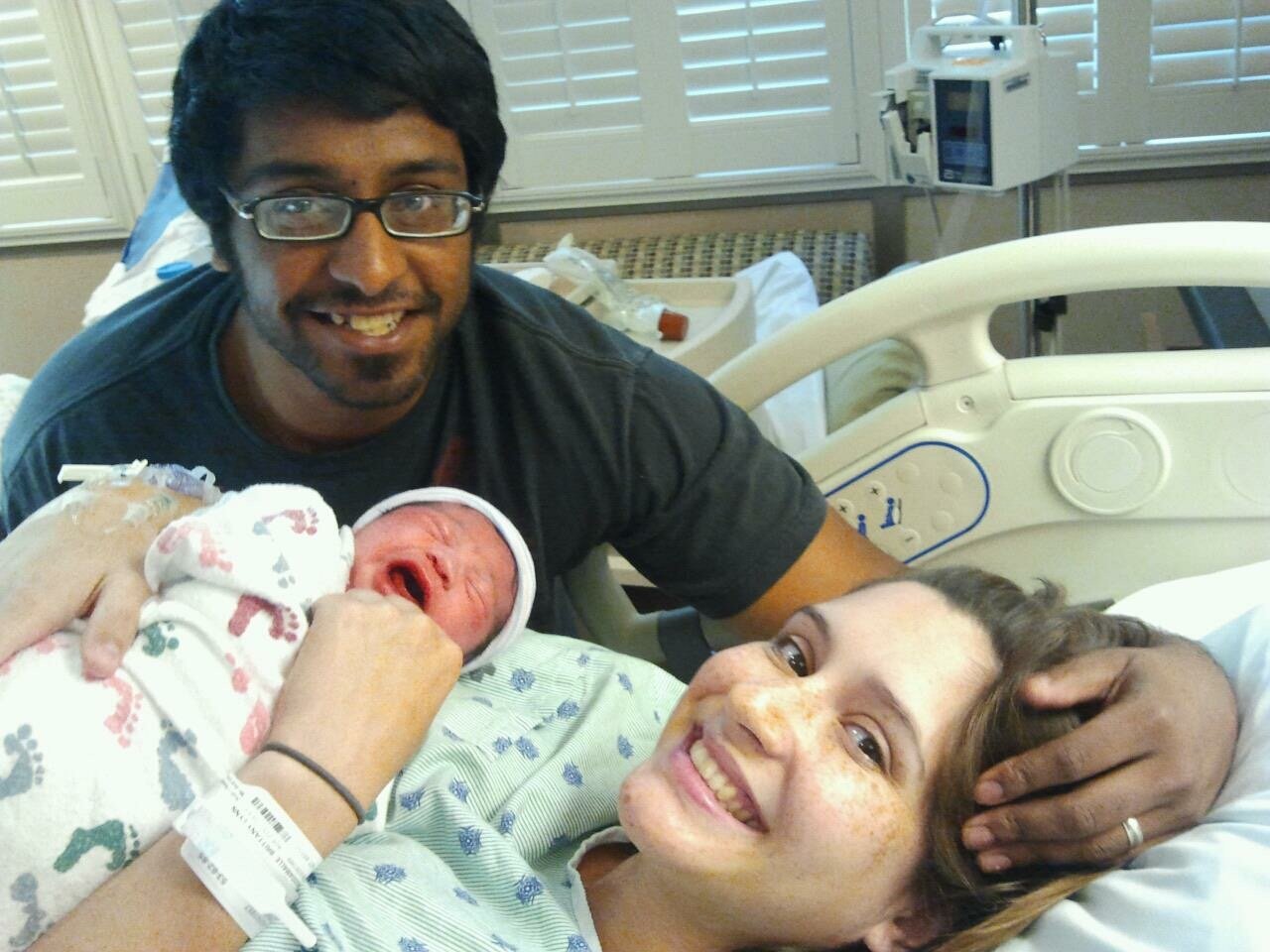
How To Prepare For A Multicultural Family
While I was pregnant, I found myself daydreaming over my little baby. I wondered what he would look like, what type of personality he would have, and how my life was going to change forever.
As a mother expecting a multiracial baby there were a few other things that came to my mind as well. I started to wonder how I would raise a biracial child.
How would I be able to blend cultures in their life?
Would I be able to show them the best from both of their cultures?
Would it be possible to teach them about Indian culture as I was just learning myself?
I had to remind myself I had time to figure it all out. My baby wouldn't come out expecting me to have their whole life planned out. All my baby wanted was my love, cuddles, and kisses right away.
When people ask me how they can prepare for their own multicultural family I talk to them about three things that have helped my family tremendously.
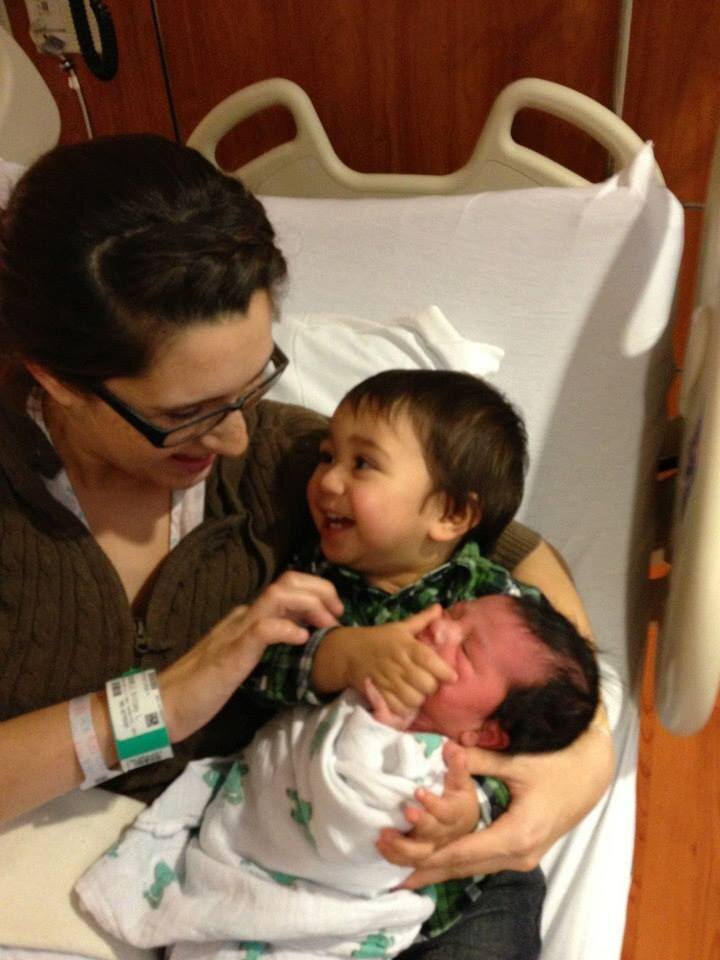
Start Building A Foundation Of Communication
As I welcomed my newborn into my life, I quickly realized how important communication was in our family. Raising a biracial child means you're going to have to talk about everything from racial identity to what they want to be when they grow up.It's important to think about how you can create open lines of communication from the beginning. Obviously, you have a few years before these communication skills will mean anything to your little one, but the more you work on it now the more natural it will be as they get older.Often times, we think we have all the time in the world and end up waiting. Even as a toddler, your children need to know they can come to you with anything.Start building this foundation in your relationship as parents and then it will be natural to continue it with your children. Your child will look to their parents to figure out what good communication looks like and whether or not it will be important to them.
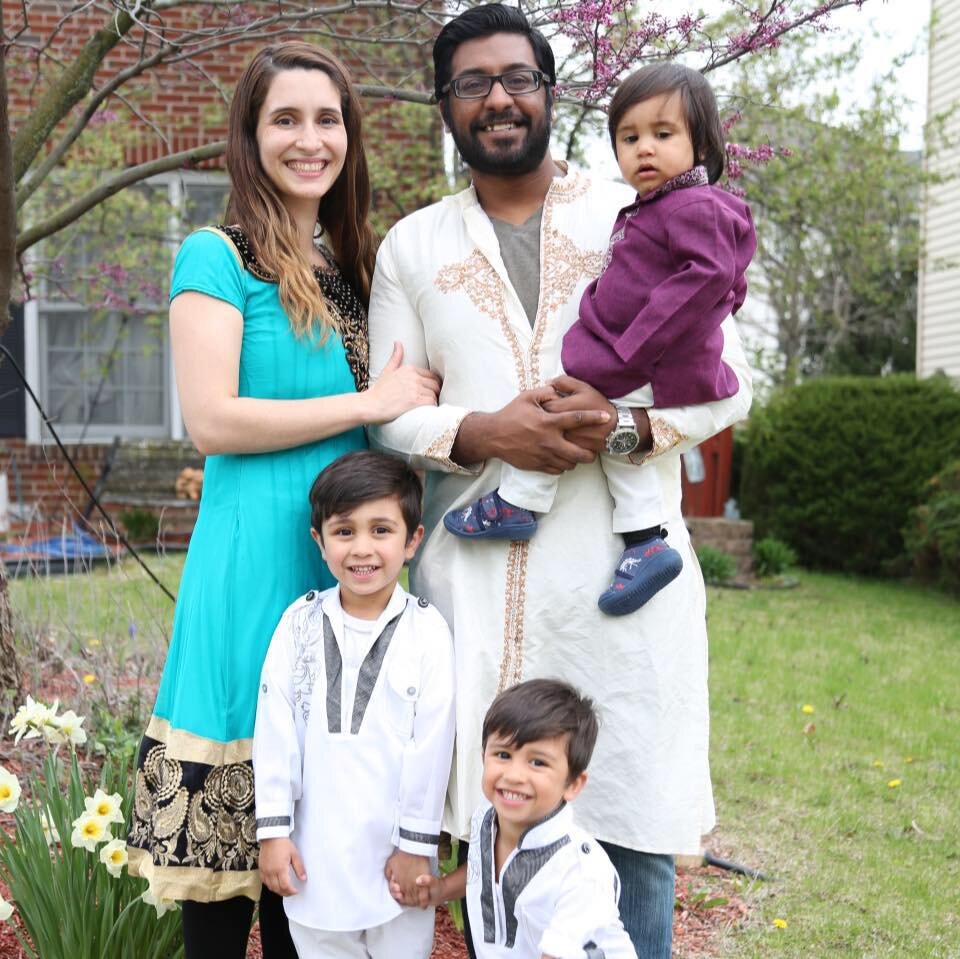
Establish A Family Identity
My husband and I started to develop a family identity as soon as we got together, but it changed when we had our baby.When you welcome a child into your family, your family identity starts to change again. Now, you and your partner aren't the only important things in your lives. Now, you have a beautiful little baby you have to consider in all decisions you make. It's important to think about your family identity early on.How will your family blend cultures?What values will your family pull from your culture?What traditions do you want to pass on to your child?As you think about these things, you will begin to develop a family identity. No two family identities look exactly the same and that's what's so beautiful about it. You have the freedom to make it what you want. As time goes on, you'll even notice things changing. Things that worked at the beginning may need to be different years from now.That's ok. Your family identity will change and mold into what you need at each season. The most important thing is to discuss your values, beliefs, culture, and traditions as time passes. Then you can hear what everyone needs in each season.

Bring Diversity Into Your Child's Life
As parents of a multiracial child, it's your job as a parent to teach them the beauty in diversity. Many children face a time in their life where they struggle over being different. They want to be like their friends and look like the people they love.It's your job to remind them diversity is beautiful. How can you do this? Show them how diverse the world is.While you're pregnant, be sure to think about diversity when you register for baby items. Look for books that show main characters of different ethnic backgrounds. Find baby dolls in an array of colors. As they grow up they should see diversity as the norm.It's important to be intentional in teaching your child about the world around them. The more they learn about the world around them, the more comfortable they'll be in their own identity.
Start Preparing Today
As you prepare for your multicultural family, think about how you can begin to think about all three of these things. They're going to help you as you prepare for your new baby and throughout their childhood.
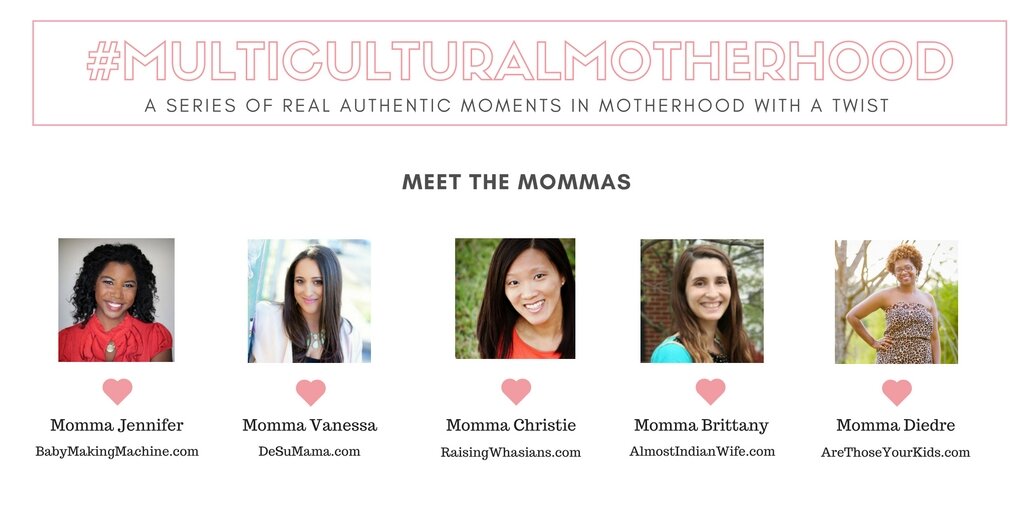
Today, I'm joining up with four beautiful mommas to talk about multicultural motherhood!
What to Expect When You’re Expecting Multiracial Babies/ De Su Mama
Will My Child Look Like Me? Thoughts from a Multicultural Mom /Raising Whasians
Books for the Multicultural Family / Are Those Your Kids
Raising Multiracial Babies: Expectations vs Reality / Baby Making Machine
Don't Miss The Next Multicultural Motherhood Link Up and Follow Me Today!
Back To School Tips For Multicultural Families

Back To School Tips For Multicultural Families
Homeschool
Gather Multicultural Resources
While collecting your supplies for the year, be sure to keep an eye out for multicultural resources. Homeschooling provides a great opportunity to focus your curriculum on what you want to teach your kids. Look around online and at local stores for multicultural pretend play items or books featuring characters from different countries.
Teach Your Children About The World
It's easy for families to center their curriculum around the cultures they're blending in their family. However, it's important to remind your kids they're global citizens. This means they should be learning about cultures around the world. Take them to different countries throughout every lesson throughout the year.
Attend Multicultural Events In Your Community
Most towns have a number of multicultural events throughout the year. Go online and find out which ones your town offers and put them on your family calendar. These events are a great way to not only learn about different cultures but experience them. Our town just through a huge celebration for India's Independence Day.
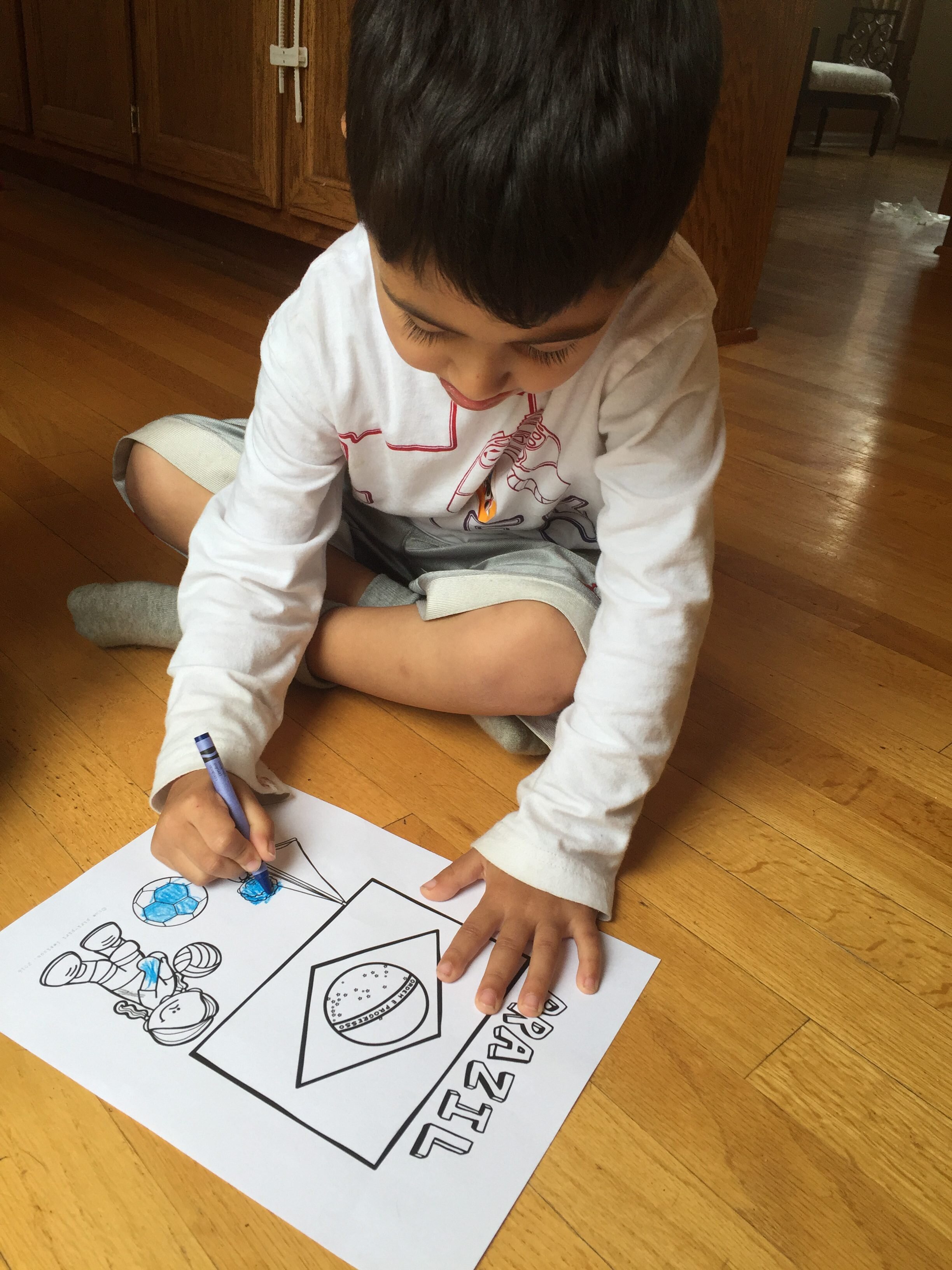
Public Schools
Meet With Your Child's Teacher
Scheduling a time to meet with your child's teacher provides an opportunity to help them get to know your family. This is the opportunity to let them know if your child speaks another language, cultures your blending at home, and answer any questions they may have. It's a good idea to be on the same page with your child's teacher. They might even incorporate different activities or have fun ideas on how to bring in your child's culture to the classroom.
Propose A Multicultural Event
Integrate your child's culture into their classroom by volunteering to help through a special event or teach them about a tradition practiced in your home. Teachers love parent volunteers! Tell them a few ideas you have on how to teach the class about a different culture.
Dual Immersion Schools
Make Sure You Value Both Languages
Your children need to know their family values both languages they're learning. Be careful not to make one seem more important. This will encourage them to figure out why they value the languages they're learning. They need to value what they're learning to be willing to put in the hard work.
Don't Make Your Child Show Off Constantly
What is your first thought when you see how much your child is learning? You want to show them off to all your friends and family! Look what she can say! Don't turn your kids into a parrot. It can embarrass them and make them less willing to learn a new language.
Be Aware Of The Challenges
Being fully immersed into a new language can hard. Your kids may deal with struggles, but it's ok. It's a normal part of the process. If you're worried, ask for a meeting with your teacher. They can let you know how your child is doing and what you can do to encourage and help them through the challenges.
-----------------------------------------------------------------------------------
Whether you're homeschooling, putting your kids in public school, or doing a dual immersion program remember you can always put a multicultural spin on their education. You are raising a global citizen. This means it's your responsibility to excited them about other cultures and blend your culture into daily lives.
3 Signs You're In An Intercultural Relationship

Share you intercultural love story with me today on twitter!
Meet Molly: A Fellow Almost Indian Wife Pt. 2
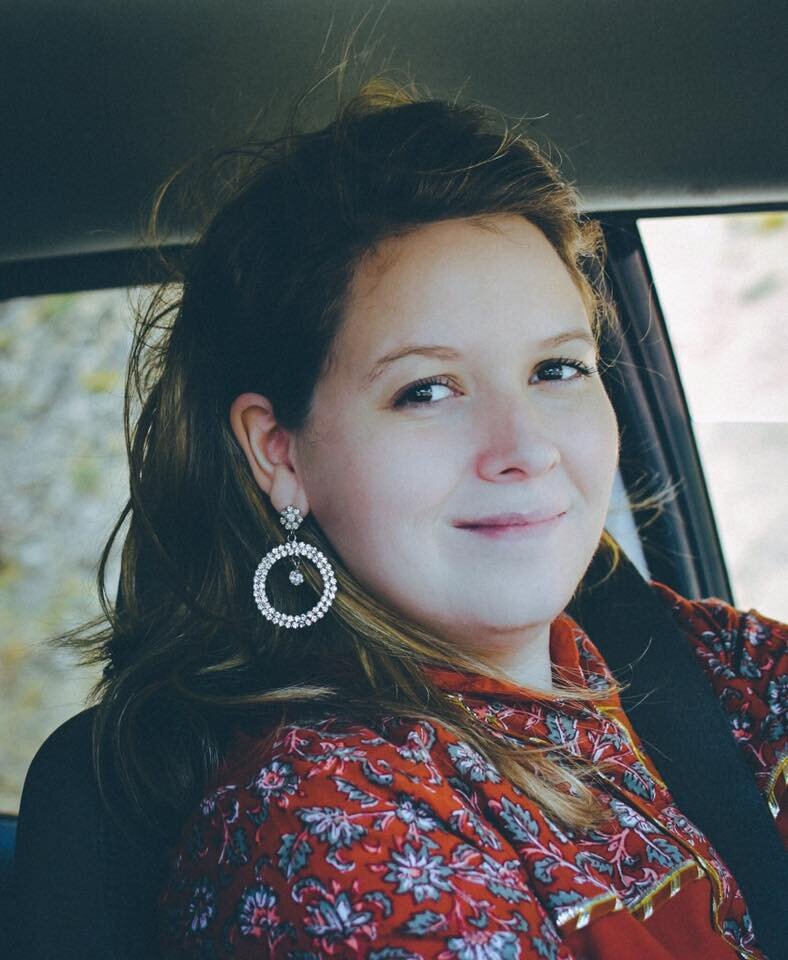 A few weeks ago, Molly, a fellow Almost Indian Wife shared what it's been like to move to India. She gave us a glimpse into her experiences and her struggles. Today, she's sharing more about her journey!
A few weeks ago, Molly, a fellow Almost Indian Wife shared what it's been like to move to India. She gave us a glimpse into her experiences and her struggles. Today, she's sharing more about her journey!
What has it been like for you to settle into a new country, new home, and fully integrate yourself into Indian culture?
Personally, I have gone through a lot while living in this other culture/country. I’ve gone through happiness, depression, loneliness, and just about every feeling.I used to be a VERY independent person, I mean I did everything; the chores, the errands, shopping, grocery shopping you name it! But ever since coming to India, I have to depend on my husband Jim for EVERYTHING! And he’s so busy with the ministry, sometimes I don’t get to go out of the house for weeks at a time! Which of course put a strain on our marriage in the beginning. I want to learn how to drive, so I don’t need to depend on Jim so much, but Jim doesn’t want me to learn because he himself is so scared of driving.The driving in India is the worst! Just imagine no one following any traffic rules, that’s how it is. The driving is also on the left side, with the steering wheel on the right, which is something I will have to learn. You can look up on YouTube, “driving in India” to see what it’s like.Either way, going outside as a “white” girl is the worst experience. I’m talking about the actual Indian experience, like shopping on the street corners, and getting expensive things for really cheap. Even walking on the streets is dangerous, you are surrounded by beggars and little kids that come up to you for money. I was even chased for 5 minutes one time because a lady wanted more money than what I gave her!
Common things you will see on the road:
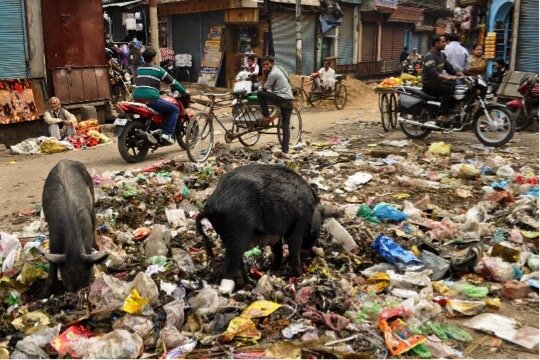
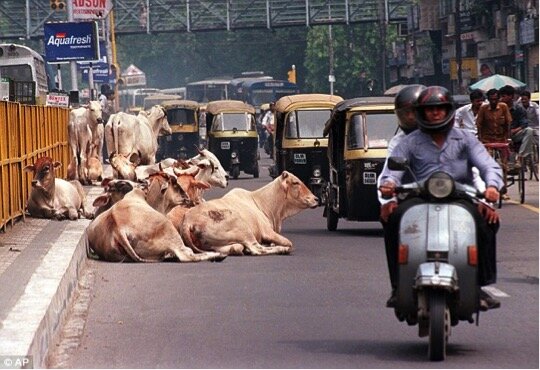 Also, because I'm White, Indians try their hardest to cheat and take advantage of me. When you shop on the streets, most of the time you can bargain with the salesman to get a better price, but with a white person...! They double and triple the cost of things!I can never go shopping without my sister in law because she knows the value of things and what the real cost is. They do have huge malls, and really nice stores where we live, and because of me, that is where we shop now. Jim’s family soon realized that they can’t take me shopping where they usually go because then they won’t get good prices.I just hate the thought of “bargaining” or “bribing.” It is something I am definitely not good at. So, just like America, we go to the more “fancier” shops where things have price tags on them. I always have to hide when there are vendors coming to the door, such as people selling clothes, bangles, jewelry because they will raise the prices.Even getting into an auto rickshaw I always have to stand behind Jim without them seeing me, then once he gets the cost of how much it will be, then I come around the corner and get in. I wish it wasn’t like that, but we certainly can’t afford triple the cost of everything just because of my skin color.I was definitely not prepared when we first moved to India. I just came from a place where you are friendly to people, can trust them to a certain extent, have your own privacy, people say their "please" and "thank you’s" etc. But here! It all went out the window. And since we came here for the ministry, there are certain things I should and shouldn’t do anymore. I can’t wear short sleeve shirts, no shorts, only full-length skirts, no tank tops, my arms have to be covered, I have to wear a shawl wherever I go, I can’t sit cross-legged in front of elders and my hair has to be covered in any church event.The clothing I have to wear is a chudidars or a sari (I can wear jeans only if Jim and I are going out, which isn’t very often). Also in church, the woman sits on one side while the men sit on the other.Indians are also very concerned about education. We have parents in our church who break their backs day and night as hard working laborers, just so that their child will get a good education. Education is everything to them, without it you're basically no one in society. Also, if their child has a chance to go abroad, it is a huge pride for the parents. I love hearing parents talk about their children who have gone to America because they seem to understand me more and the culture where I come from.In the end, my husband and I are here for God and the ministry. I have my moments of being homesick, there are good days and bad days. India is full of culture and diversity and I’m very blessed to be going through this experience. God has revealed a lot to me about myself and in our marriage. I feel that ever since living here, I’m able to understand Jim more because I’m living what he has lived his whole life before he met me and it has been tough but well worth the eye opener. We both love our cultures and that is one blessing our kids will have, a life of two very different worlds.
Also, because I'm White, Indians try their hardest to cheat and take advantage of me. When you shop on the streets, most of the time you can bargain with the salesman to get a better price, but with a white person...! They double and triple the cost of things!I can never go shopping without my sister in law because she knows the value of things and what the real cost is. They do have huge malls, and really nice stores where we live, and because of me, that is where we shop now. Jim’s family soon realized that they can’t take me shopping where they usually go because then they won’t get good prices.I just hate the thought of “bargaining” or “bribing.” It is something I am definitely not good at. So, just like America, we go to the more “fancier” shops where things have price tags on them. I always have to hide when there are vendors coming to the door, such as people selling clothes, bangles, jewelry because they will raise the prices.Even getting into an auto rickshaw I always have to stand behind Jim without them seeing me, then once he gets the cost of how much it will be, then I come around the corner and get in. I wish it wasn’t like that, but we certainly can’t afford triple the cost of everything just because of my skin color.I was definitely not prepared when we first moved to India. I just came from a place where you are friendly to people, can trust them to a certain extent, have your own privacy, people say their "please" and "thank you’s" etc. But here! It all went out the window. And since we came here for the ministry, there are certain things I should and shouldn’t do anymore. I can’t wear short sleeve shirts, no shorts, only full-length skirts, no tank tops, my arms have to be covered, I have to wear a shawl wherever I go, I can’t sit cross-legged in front of elders and my hair has to be covered in any church event.The clothing I have to wear is a chudidars or a sari (I can wear jeans only if Jim and I are going out, which isn’t very often). Also in church, the woman sits on one side while the men sit on the other.Indians are also very concerned about education. We have parents in our church who break their backs day and night as hard working laborers, just so that their child will get a good education. Education is everything to them, without it you're basically no one in society. Also, if their child has a chance to go abroad, it is a huge pride for the parents. I love hearing parents talk about their children who have gone to America because they seem to understand me more and the culture where I come from.In the end, my husband and I are here for God and the ministry. I have my moments of being homesick, there are good days and bad days. India is full of culture and diversity and I’m very blessed to be going through this experience. God has revealed a lot to me about myself and in our marriage. I feel that ever since living here, I’m able to understand Jim more because I’m living what he has lived his whole life before he met me and it has been tough but well worth the eye opener. We both love our cultures and that is one blessing our kids will have, a life of two very different worlds.
Do you have questions for Molly about her experiences? Ask her in the comment section!

My Multicultural Family: The Olympic Summer Games

 The 2016 Olympic Summer Games are right around the corner. It's a huge opportunity to teach your family about the world!Multicultural Kid Blogs just came out with their Summer Games Activity Pack! This pack is truly in a league of its own. It's 100 pages of history and activities! When your kids have finished going through their Summer Games Activity Pack they'll know about the nations with the most medals, famous Olympians, Olympic sports, delicious recipes, and so much more!This year we decided to throw the Olympic Games into our homeschool routine. This activity pack has been a huge resource for us because it's fun for all three of my kids. I don't know about you, but I struggle to find activities that work well for all their ages. This activity pack is great for any age!
The 2016 Olympic Summer Games are right around the corner. It's a huge opportunity to teach your family about the world!Multicultural Kid Blogs just came out with their Summer Games Activity Pack! This pack is truly in a league of its own. It's 100 pages of history and activities! When your kids have finished going through their Summer Games Activity Pack they'll know about the nations with the most medals, famous Olympians, Olympic sports, delicious recipes, and so much more!This year we decided to throw the Olympic Games into our homeschool routine. This activity pack has been a huge resource for us because it's fun for all three of my kids. I don't know about you, but I struggle to find activities that work well for all their ages. This activity pack is great for any age! This week we pulled it out and started to learn about the different nations. While my kids were coloring the maps, I read through the history portion. At first, I thought it was more for my sake. They get to color and I get to think they're learning about the world. I was greatly surprised when my five and three-year-olds continued to stop me while I was reading to ask questions. They were so intrigued to hear more about popular sports and find out what the Olympic games are all about.Whether you're homeschooling your kids like us or you want to teach your kids about the world, the Summer Games Activity Pack is perfect! Here is a little recap of all the things it offers!
This week we pulled it out and started to learn about the different nations. While my kids were coloring the maps, I read through the history portion. At first, I thought it was more for my sake. They get to color and I get to think they're learning about the world. I was greatly surprised when my five and three-year-olds continued to stop me while I was reading to ask questions. They were so intrigued to hear more about popular sports and find out what the Olympic games are all about.Whether you're homeschooling your kids like us or you want to teach your kids about the world, the Summer Games Activity Pack is perfect! Here is a little recap of all the things it offers!
What To Expect In Your Summer Games Activity Pack
History Of The OlympicsInformation On The Olympic GamesOlympic Medal TrackerColoring PagesRecipes For Each NationActivity PagesYou can even take it up a notch and host your own Olympic Games at home! Take what you learn from the packet and make your summer one to remember!
Get your Summer Games Activity Pack here!
Meet Molly, A Fellow Almost Indian Wife
Today I am very excited to introduce you all to my friend Molly. She’s a fellow Almost Indian Wife and just got back after living in India with her husband. She took some time to share about her experiences in a new culture with all of us!
Molly tell us a little about yourself.
Hello everyone, my name is Molly Elliot and I’m married to my wonderful husband of 4 years, Jim Elliot. Jim and I were married in India, November 2012, and soon after that we came back to the U.S to work and save some money. We just came back to Bangalore, India January 2015 and have lived here ever since.These are pictures of our wedding.
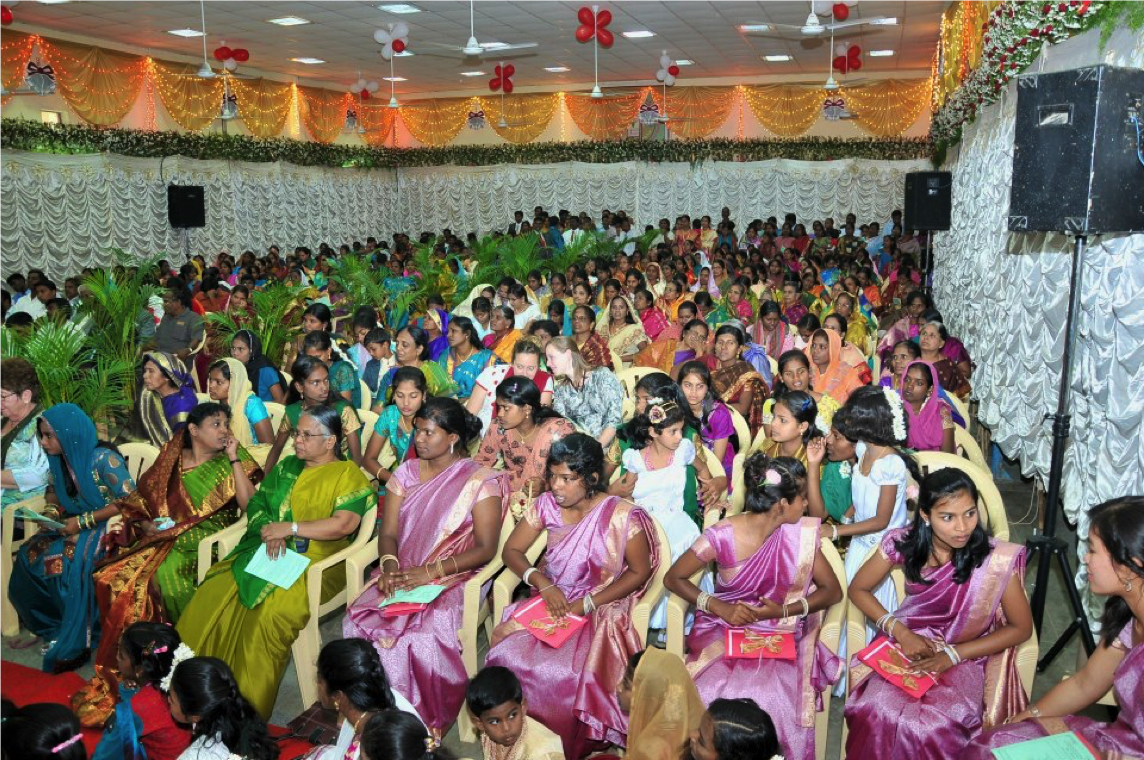
What was it like for you living in India? Can you share a bit about your experiences?
My experiences while living here in India have been both good and bad. I understand each state has their own culture, but I’ll share my experiences living with a Tamil family. My husband and I came here to do ministry alongside Jim’s dad who is a pastor, as well as help raise 11 street children (girls) that they have been running since 2001. We currently live with the girls, my in-laws, and Jim’s two sisters. The boys home (15 boys) is separate from the girls’ home, outside city limits.We live in a three floor house, the ground floor is my in-laws space, first floor is our space, and the second floor is the girls space.

What struggles have you faced while living in a new culture and home across the world?
One of the biggest struggles for me since we’ve moved here is not having our own place. In America, Jim and I lived on our own for two years, we learned how to survive with each other. Here in India, the son has the responsibility of taking care of his parents until their death. This was a huge strain on our marriage because I wanted it to be like America; live in our own house with our own rules, our own privacy, go to the in laws house if not every day then every other day. I wanted our life to be exactly the same as it was, but I learned the hard way that it would never be the same. Usually our day begins with being woke up by our wonderful neighbor who sweeps the outside of his gate at 3:30 in the morning for an hour, right outside our window. That’s one common thing you will see, all the women get up early to sweep the outside because of all the dust, then (if they are Hindus) they will decorate the cement with chalk designs.Then we go downstairs, have our morning tea, you can NOT start your day without having chai tea! we have our Indian breakfast which is usually; Dosa with Chutney, Idli, or Puri, or my ABSOLUTE favorite; Masala Dosa. Breakfast is my favorite meal of the day because it doesn’t involve rice.


Be sure to subscribe so you can catch part 2 of Molly's story! Do you have any questions for her?
Ask The Almost Indian Wife: How Can I Learn My Partner's Language
 Ask The Almost Indian Wife
Ask The Almost Indian Wife
This new series is here to help all of us discuss things we all deal with in our multicultural families. This week's question is important whether you are looking to learn your partner's language or if you want to raise your children in a bilingual household.
_________
Dear Almost Indian Wife,
"How do I, an English speaker, begin to learn my partner's language? Similar to Hindi, but it's actually Gujarati. In search of all resources, tips, and ideas to learn and to be able to communicate with only Gujarati speaking family members."
_________
How Can I Learn A New Language?
Learning a new language can be intimidating. Not to mention, feel impossible if it's not a common language in the US. I've wanted to learn Telugu since my husband and I got together, but it's been hard. I could never find resources to learn the language and ended up just learning words here and there.My determination was renewed when I had kids. I knew I wanted them to be fluent in both languages. My husband travels for a living and is gone a lot. I knew that meant I would be the one home with them the majority of the time so the responsibility would fall on my shoulders.I started researching every resource I could find. Here are the most effective ones I discovered.
Audio CD's
Go to your local library or look online for audio cd's. They tend to have more language options and work for any lifestyle. You can listen to them at home when the kids are napping, on the way to work or the gym, or at night after a long day.
Books
I wouldn't recommend a book as your sole method of learning, but it's a great supplemental resource. Once you learn the correct way to say the word, the book will remind you. Then you can read the book and it will teach you the correct way to put sentences together. If you're like me, your book will end up covered in highlighter!
Private Tutor
There are a ton of tutoring companies that offer different languages. Having a tutor come into your home or skyping with you is one of my top choices. They can hear you say different words or phrases and correct you. As you get to know the language better, you can even have conversations together.
Full Immersion
This is one of the most popular ways to learn a language. Whether you're trying to teach a child or learn later as an adult, this method work. Full immersion means you move to the country where the language is spoken or you move close to or into the same house as relatives that speak the language.This is what we aimed for with our children. We moved in with my father in law and he sits with our kids every morning and reads books to the in Telugu and teaches them different words. He also talks to them in Telugu. At first they had no idea what he was saying. Now, I've noticed them responding in English!
Tips For Learning A New Language
Learning a new language requires a lot of hard work and determination. If you're not careful, you will give up. It can start looking like more work than it's worth. Here are a few tips to help you.
Make It Fun
We are more willing to learn something new if we have fun doing it. Find different ways that you can enjoy learning it every day. One way to have fun is to learn with someone you love. If you're learning to be able with your spouse, practice with them. It's more fun to learn with someone.
Talk In The Language At Home
As you learn the language, start using it at home. Whether you use it for different words or complete phrases. You need to practice as much as you can. Even if that means you're home, talking to yourself. Practice, practice, practice.
Entertainment
Another way to make it fun is to bring your entertainment into it. Netflix has an entire foreign section! You can scroll through and look for a movie in the language you're learning. Then put subtitles on and enjoy! You will even start noticing how they put sentences together and pick up on what they're saying.
___________
The most important thing to remember when learning a new language is that it takes time. In a perfect world, we could learn overnight and start talking to family members in the language right away. In reality, it's going to take time and hard work.The great thing is that it's going to mean so much to your new family when they see you learning their language. They know you're learning so you can talk with them. As you learn, start using what you do know in conversations together. They can take part in helping you learn and it can become a bonding moment between you.
What tips or questions do you have about this week's topic?
Intercultural Couples: Why Should You Cook For Your Loved One?
This post is sponsored by Saffron Fix. As always all my opinions expressed here are my own.
As a wife in an intercultural relationship, I can tell you making food from a culture so new to me can be intimidating. When I first started making Indian food for our family, I had no idea what I was doing. The first time I made chicken curry was a disaster and to be really honest, I wasn't extremely motivated to keep trying. There are so many couples out there facing similar situations. They want to learn to make the food their loved one grew up with, but they're intimidated and tend to give up early. 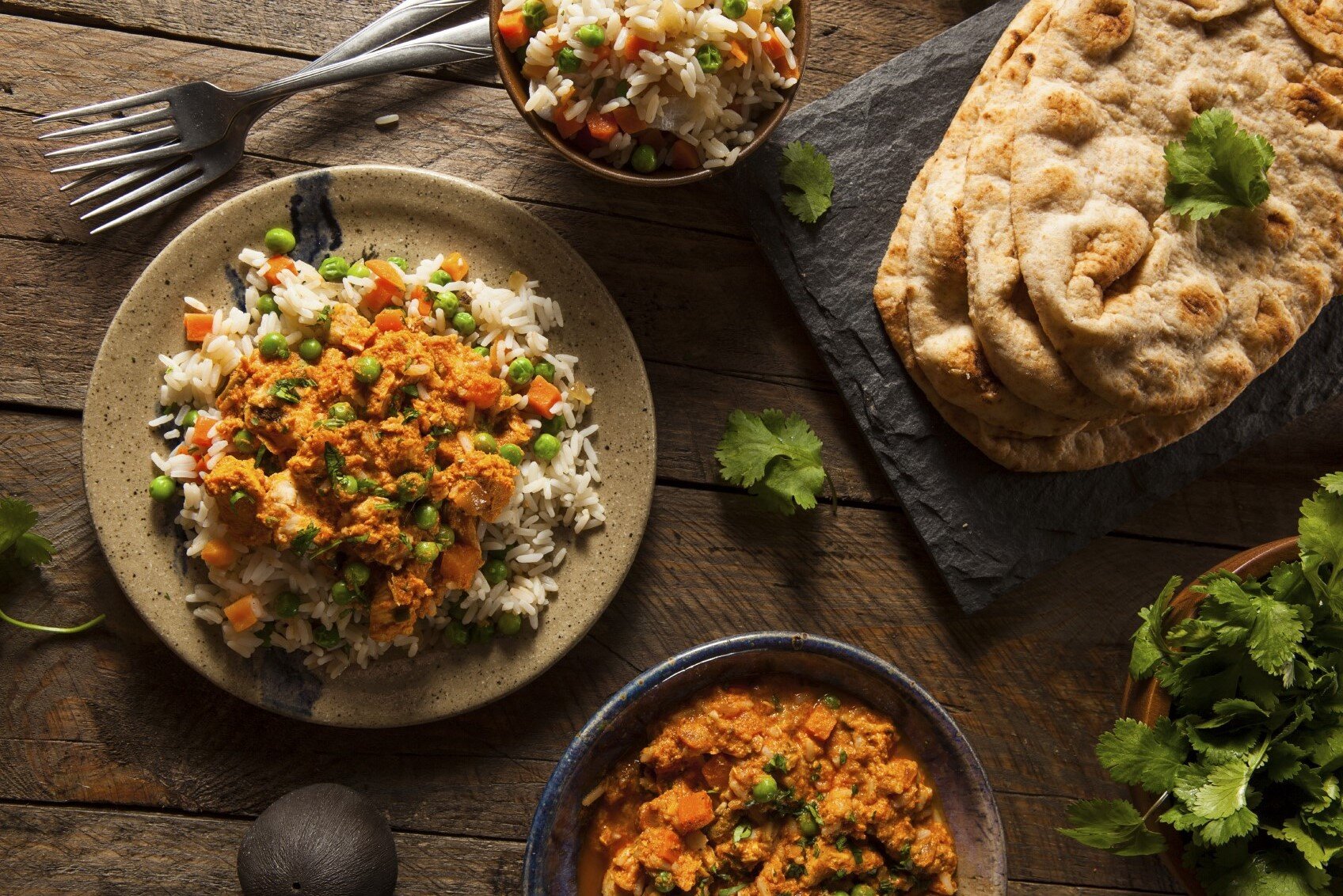 Taking the time to learn how to make food from your loved one's childhood means more than you think.
Taking the time to learn how to make food from your loved one's childhood means more than you think.
It shows your spouse you love them.
When you take the time to learn something new, it reminds your spouse how much you love them. Sometimes, you need to go beyond just saying "I love you," and actually show them.
It brings you and your spouse together.
Food has always been the thing to bridge cultures and bring people together. Whether you're eating or cooking together, you're putting everything else on hold and making each other the priority.
It reminds your spouse you want to blend cultures.
Blending cultures in your food is a great idea because it means you're both experiencing it together. Every bite you have and every minute you take to prepare the dish, is another moment you're blending cultures in your family. ---You can see how important it is to blend cultures in your family meals, but don't let it intimidate you. All you need to do is ask for help. If this is you and you're looking for a little help to learn how to make authentic dishes for your family, Saffron Fix is the answer.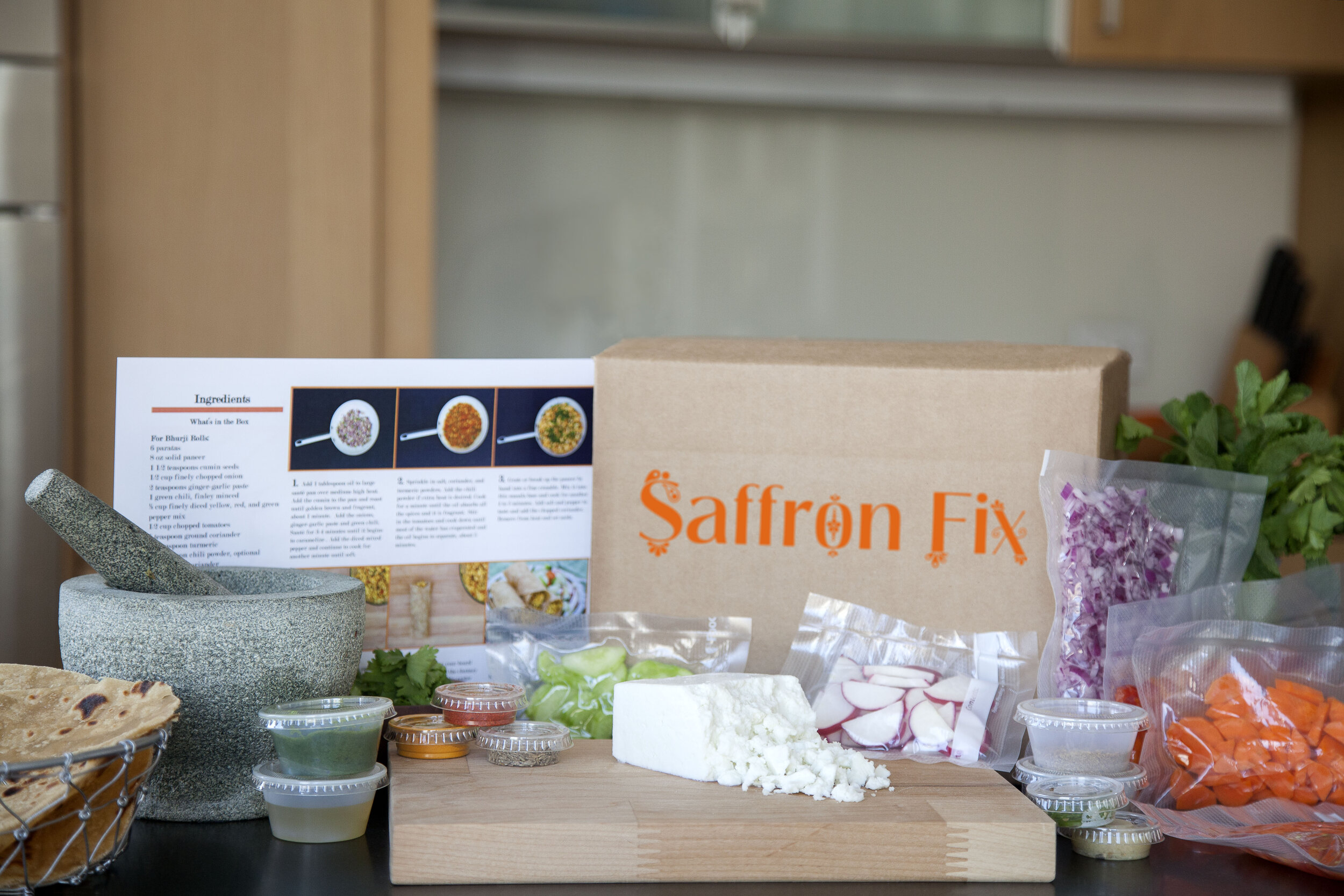 Saffron Fix is a meal-kit service that will send you everything you need to make delicious Indian dishes in no time! All you need to do is go to their site, choose from mouth watering recipes, and checkout. They'll send you a box full of pre-chopped ingredients, authentic spices, and the recipes. All of the meals are ready in under thirty minutes!Whether you want to learn how to make authentic Indian dishes or need quick and easy meals throughout the week, Saffron Fix is for you.
Saffron Fix is a meal-kit service that will send you everything you need to make delicious Indian dishes in no time! All you need to do is go to their site, choose from mouth watering recipes, and checkout. They'll send you a box full of pre-chopped ingredients, authentic spices, and the recipes. All of the meals are ready in under thirty minutes!Whether you want to learn how to make authentic Indian dishes or need quick and easy meals throughout the week, Saffron Fix is for you. 

